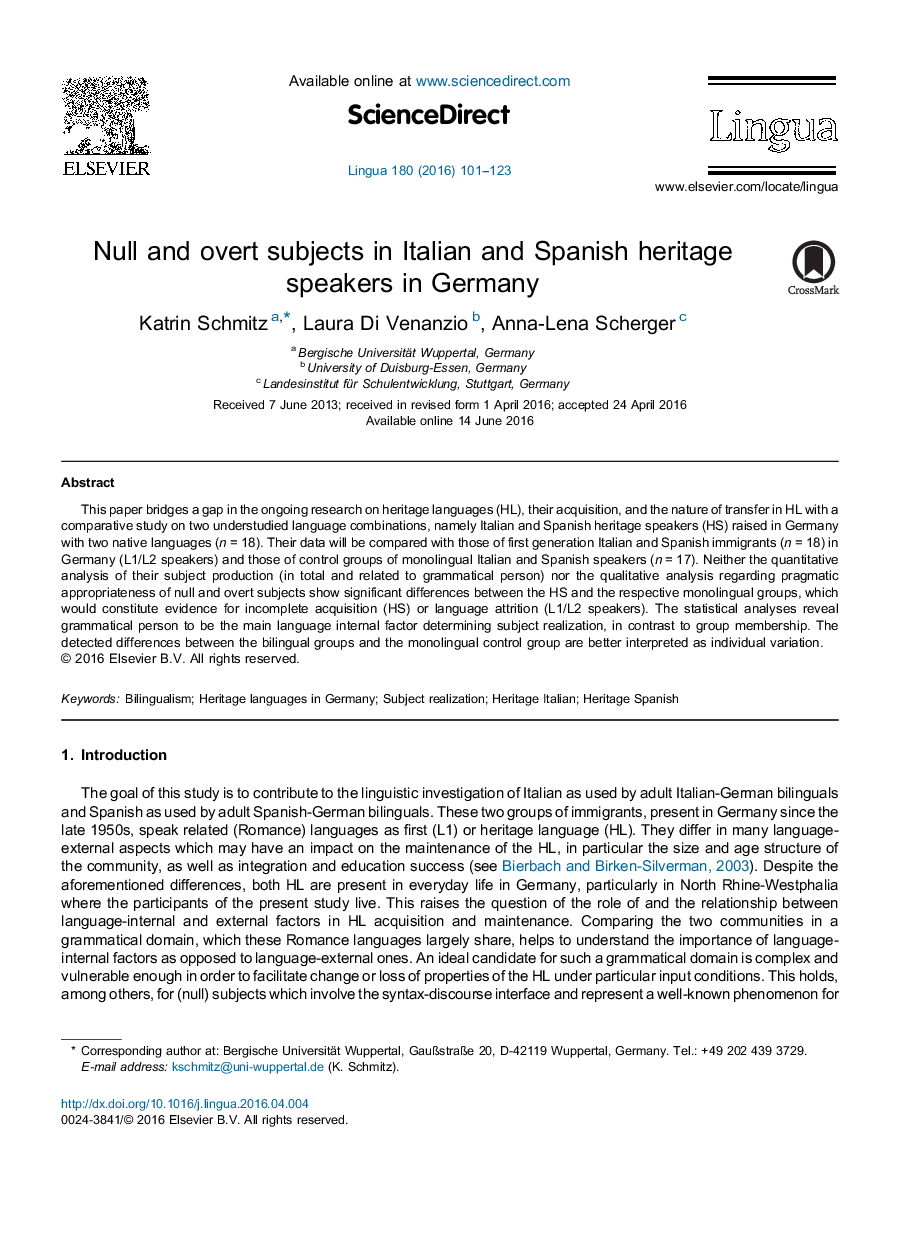| Article ID | Journal | Published Year | Pages | File Type |
|---|---|---|---|---|
| 935235 | Lingua | 2016 | 23 Pages |
•Analyses of null and overt subjects in the heritage languages Italian and Spanish.•Heritage speakers are compared with monolinguals and sequential bilinguals.•The bilinguals do not show signs of language attrition or incomplete acquisition.•The study uses logistic regression models.•Unlike group membership, grammatical person affects null subject rates.
This paper bridges a gap in the ongoing research on heritage languages (HL), their acquisition, and the nature of transfer in HL with a comparative study on two understudied language combinations, namely Italian and Spanish heritage speakers (HS) raised in Germany with two native languages (n = 18). Their data will be compared with those of first generation Italian and Spanish immigrants (n = 18) in Germany (L1/L2 speakers) and those of control groups of monolingual Italian and Spanish speakers (n = 17). Neither the quantitative analysis of their subject production (in total and related to grammatical person) nor the qualitative analysis regarding pragmatic appropriateness of null and overt subjects show significant differences between the HS and the respective monolingual groups, which would constitute evidence for incomplete acquisition (HS) or language attrition (L1/L2 speakers). The statistical analyses reveal grammatical person to be the main language internal factor determining subject realization, in contrast to group membership. The detected differences between the bilingual groups and the monolingual control group are better interpreted as individual variation.
